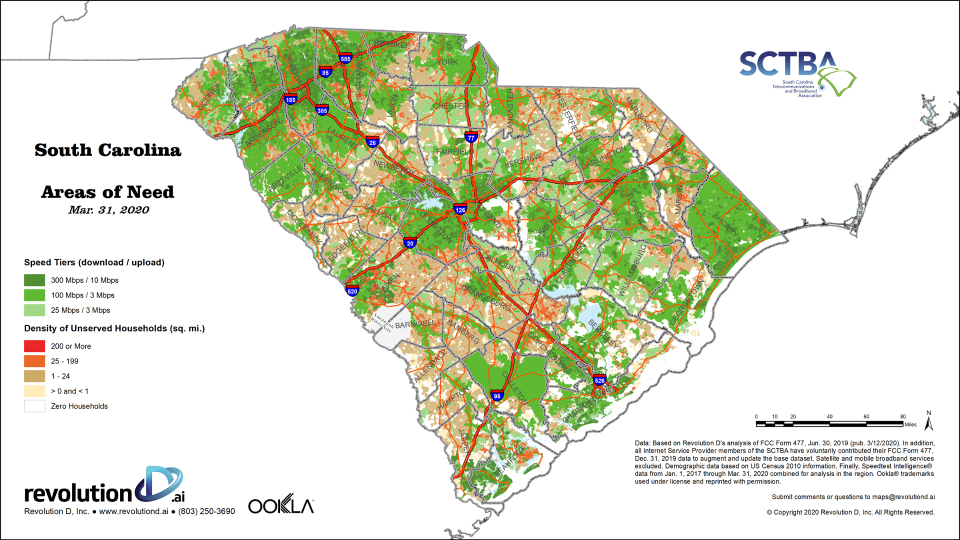Kershaw County received $9.1 million for infrastructure that will create or improve e-Connectivity for 6,251 homes, 24 farms, 15 businesses, four critical community facilities, three educational facilities and a health care center.
“I mean this is truly monumental for our community. And we are so grateful to Jim for reaching out to us,” said Laurie.
TruVista, the service provider installing the network, lauded those involved in the grant application process for their leadership at a press conference in February 2020.
“If you think about this, this is how public, private partnerships should work. Both at the high level and particularly on the ground level across political lines across all the demographics and everything else, we are all in this to make it work for all Americans, including those that live in nonurban areas,” said Brian Singleton, CEO of TruVista.
There are currently eight pending ReConnect applications from South Carolina counties. Communities are also finding other ways to expand broadband infrastructure. Jim is currently working with Richland County Council to expand infrastructure in the more rural, southeastern part of the county where approximately 10,300 residents do not have broadband access.
In this case, it was a matter of instituting “Dig Once” – the national best practice of coordination between public and private excavators with local government on the installation of extra fiber or conduit whenever ground will be broken in the public right-of-way. After a presentation from Jim, Richland County Council approved $85,000 from the county’s general fund budget to lay two miles of conduit while excavating for an ongoing expansion of the county water and sewer system.
Mission Critical: Internet Access in the COVID-19 ‘New Normal’
Statewide interest in internet access intensified with the COVID-19 pandemic as people work from home, home-school their children, access their doctors and health screenings remotely, and purchase essential goods and services online. Jim’s maps are being heavily relied upon as South Carolina adapts to a new, and a more digital, way of life. They were integrated in the State Department of Education’s technology plan. They were also referenced by Governor McMaster’s AccelerateSC Task Force that recommended $100,250,000 of the $1.9 billion the state received from the CARES Act go towards creating a statewide broadband plan, improving broadband infrastructure and creating more hot spots.
On June 25, Governor McMaster signed the CARES Act Appropriation from the General Assembly. Out of $1.9 billion in federal funding available, the appropriation allocates $668 million in spending. $50 million will be used for internet broadband mapping and planning, infrastructure and mobile hot spots.
With the increased momentum on this issue, South Carolina is poised to become more connected than ever. But, the installation of infrastructure takes time, and there are still gaps to be closed. Jim remains focused on short- and long-term solutions. Through his collaboration with Fellows, he is well over halfway to his goal of bringing broadband to 50,000 South Carolinians.
“When you drive a stake in the ground and decide to make South Carolina your home, you settle in and you get the job done,” Jim said. “I think about it every day. I want equality. I want everyone to have access to internet.”



